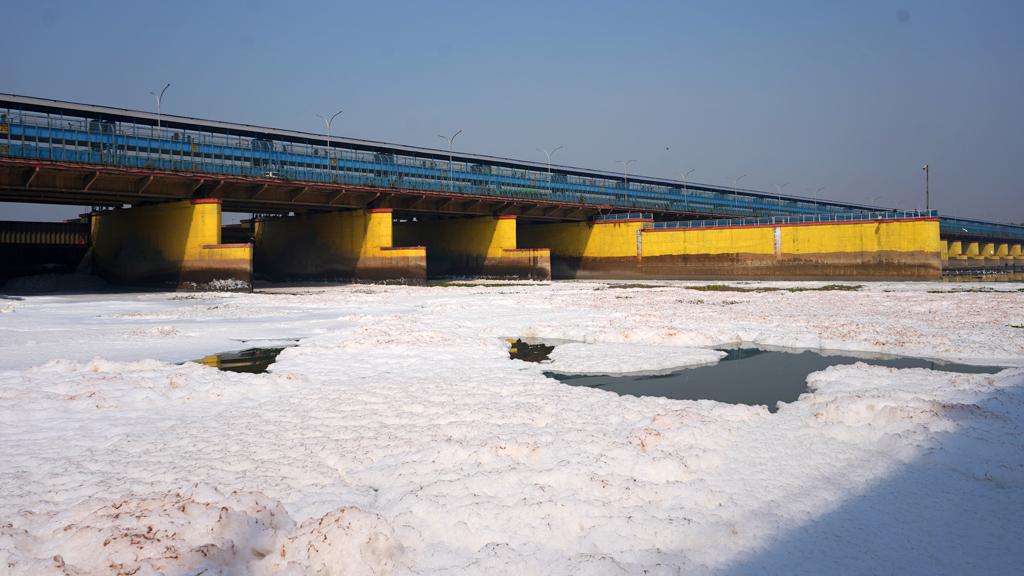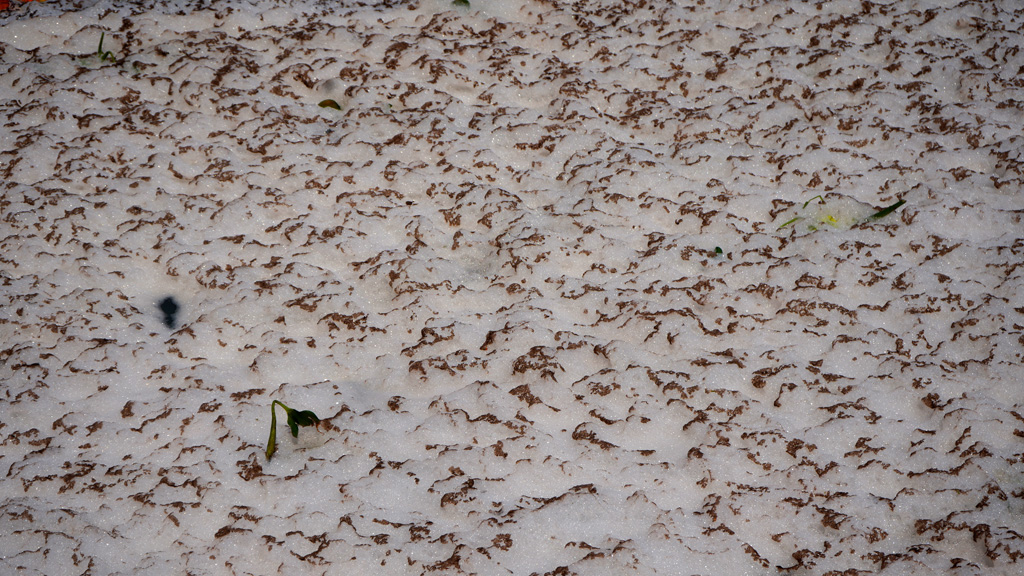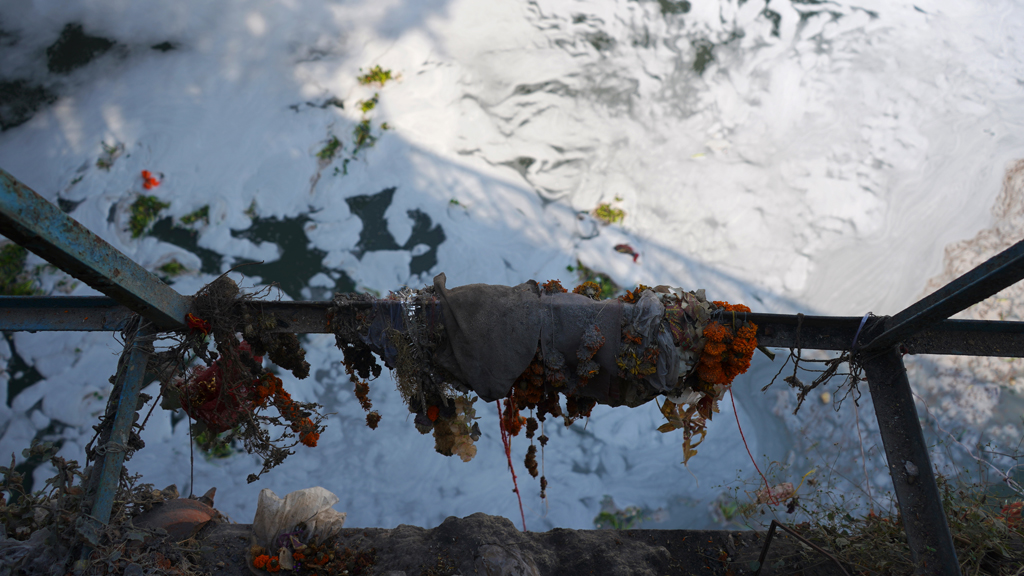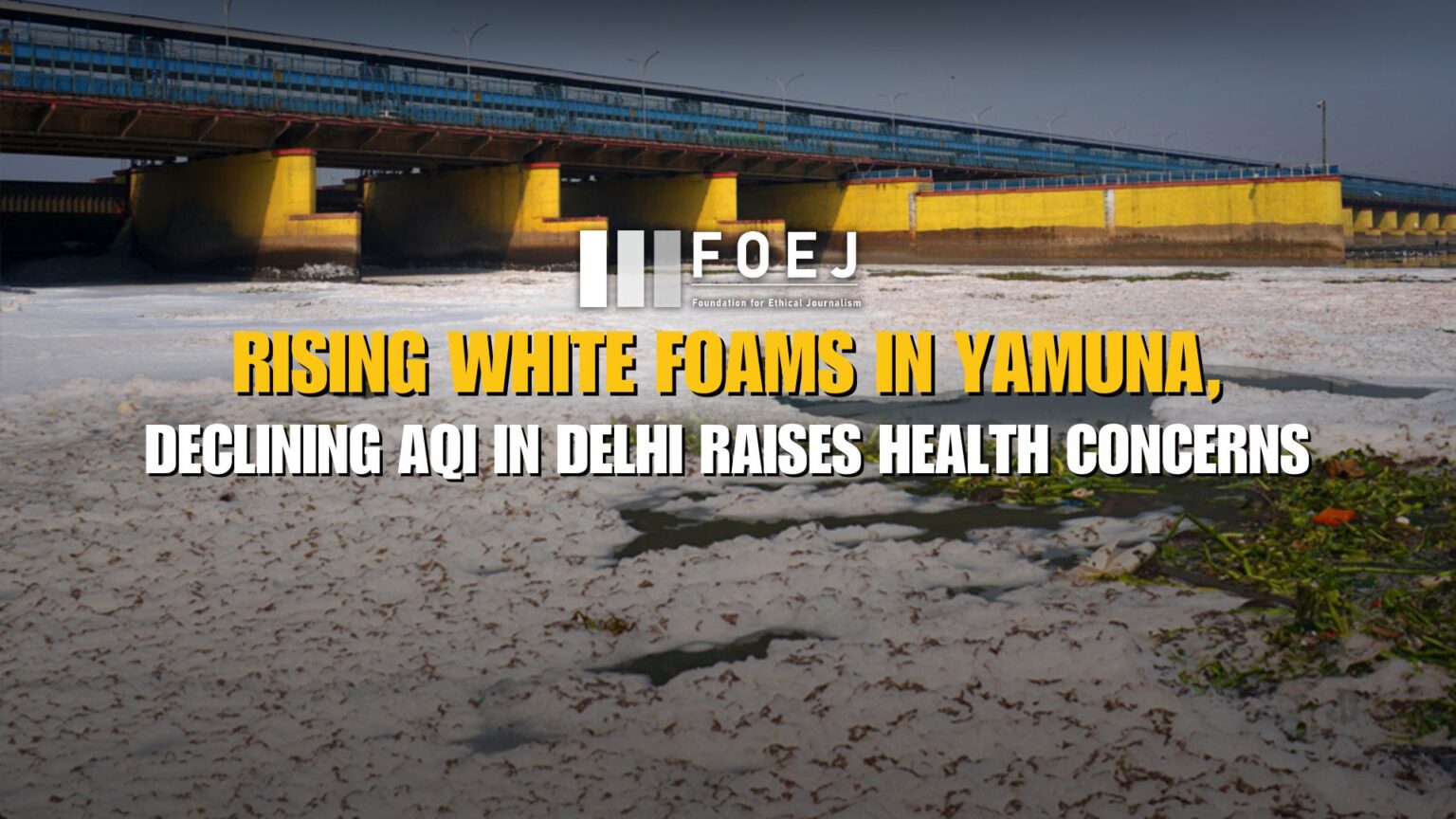As winter sets in, Delhi’s pollution crisis is worsening, with the Air Quality Index (AQI) rapidly declining, posing severe health risks to residents. The national capital, already notorious for its smoggy winters, is facing another environmental hazard large patches of white foam floating on the Yamuna River. These foams, resembling clouds, are not a natural phenomenon but are caused by untreated industrial waste being discharged into the river, adding to the city’s growing pollution woes.

Photograph by :Iqra Noor
This picture is a property of FOEJ MEDIA
The froth, often seen along the banks of the Yamuna, primarily consists of phosphates and surfactants, which are released from untreated sewage and industrial discharge. Factories in Delhi and nearby regions release harmful chemicals directly into the river, bypassing proper treatment processes. This pollution is exacerbated by the high levels of ammonia in the river, which disrupts the aquatic ecosystem and makes the water unusable for domestic and agricultural purposes. The river, a lifeline for millions, is becoming a toxic hazard due to unchecked industrial waste, leading to the formation of this foam.

Photograph by :Iqra Noor
This picture is a property of FOEJ MEDIA
This seasonal spike in pollution, commonly known as “Delhi’s toxic smog,” results from the combination of lower temperatures and atmospheric inversion, which traps pollutants close to the ground. The concentration of particulate matter (PM2.5 and PM10) in the air has crossed hazardous levels, making breathing increasingly difficult for residents, especially those with pre-existing respiratory conditions.

Photograph by :Iqra Noor
This picture is a property of FOEJ MEDIA
Health experts warn of a spike in respiratory illnesses, cardiovascular diseases, and other pollution-related health problems as both air and water quality worsen. The white foam in the Yamuna adds to the city’s environmental burden, with harmful chemicals potentially entering the food chain and affecting local biodiversity.Delhi’s government and environmental agencies face mounting pressure to implement stricter pollution control measures, regulate industrial waste disposal, and improve the city’s sewage treatment infrastructure. Without urgent intervention, both the river and the air quality will continue to degrade, intensifying the health and environmental challenges for the national capital.









